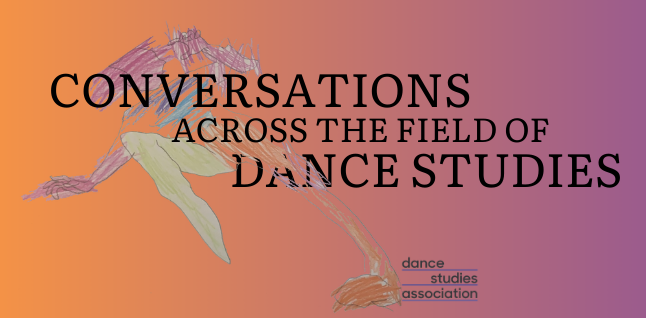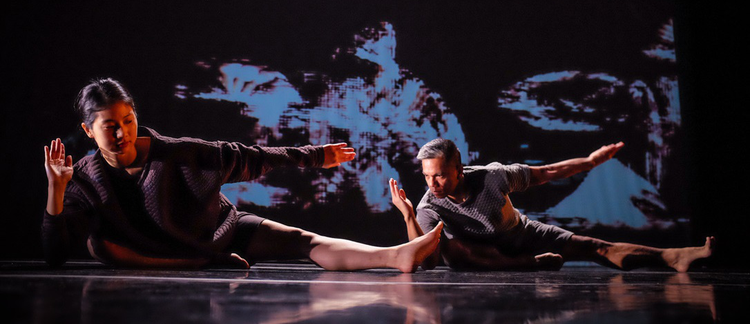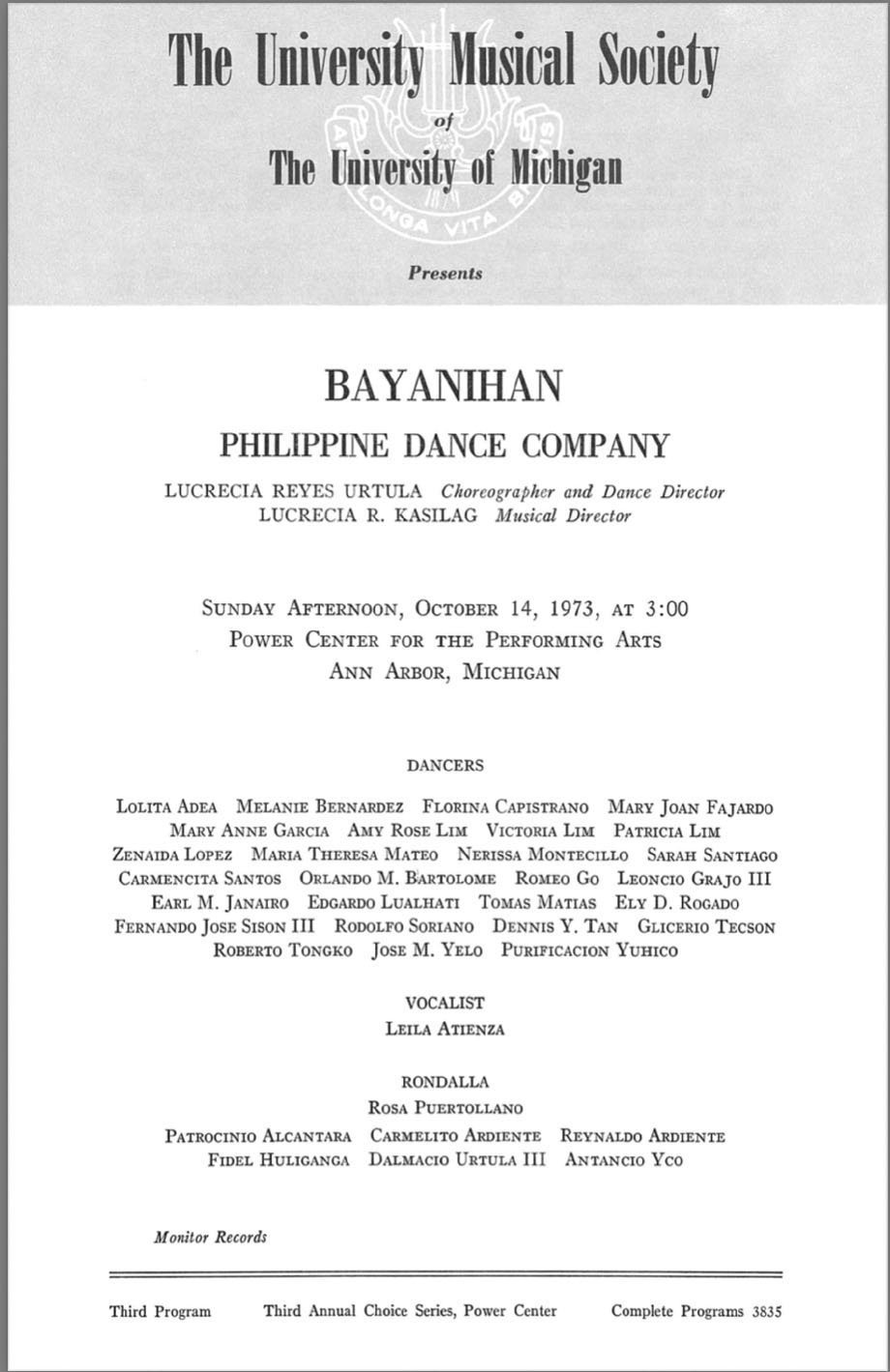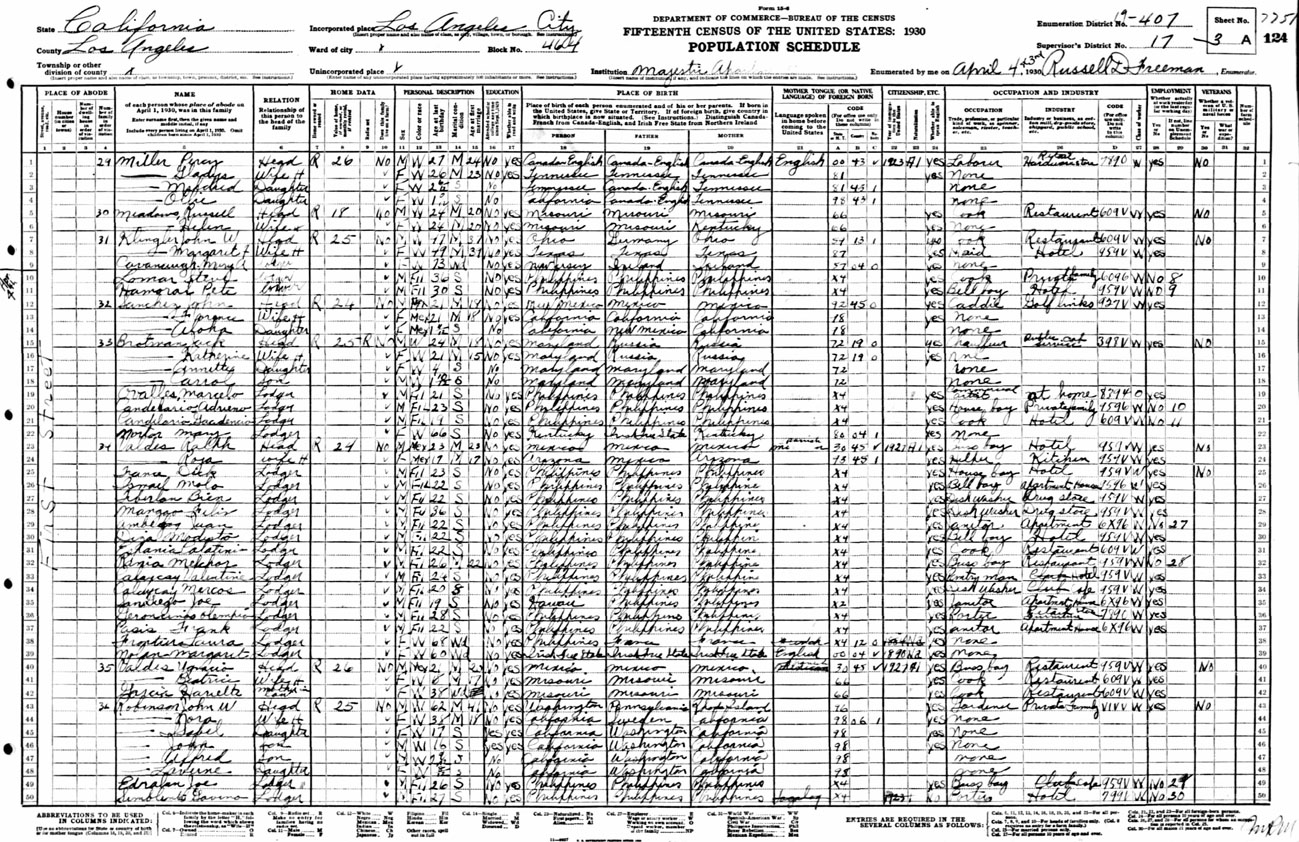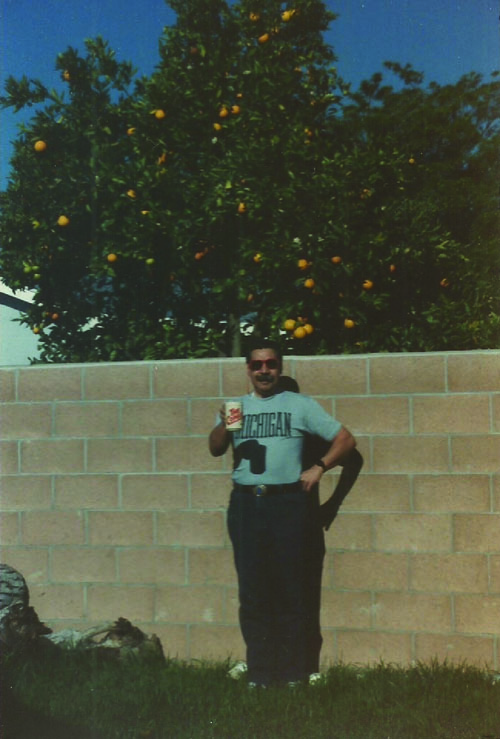No body ever simply appears on stage. Bodies are, rather, made to appear in performance, rendered visible as the encoded tissues interwoven by systems of ideological representation that mediate the anxieties and interests at play in specific historical moments.
(Rouse 1997, iv)
This essay—part scholarly, part biographical, part elegy—intertwines histories of anti-Filipino and anti-Asian violence in the twentieth and twenty-first centuries with my family history and my own history of dancing and dance scholarship to examine multiple and ongoing aftermaths and their corporeal and collective reverberations. The essay takes as touchpoints moments of my family history across generations: the anti-Filipino riots in California and the taxi dance hall scene in Los Angeles (LA) in 1930 when my grandfather and his brother lived in Historic Filipinotown; an incident where my father was chased on foot by white men in a truck in rural Minnesota in the 1980s; and reaction by my cousin’s daughter to the Atlanta murders in 2021 on social media. Between these moments of fraught racialized embodiment, I weave my own dancing, running, and dance scholarship, which can be traced to the first dance concert I saw as a young child, a tour of the Filipino national dance company Bayanihan. I use the essay to interrogate my responsibilities as a white-passing mixed-race inheritor of these histories and as a dancer scholar living in and with these aftermaths.
March 16, 2021, Atlanta, Georgia
The impetus for this essay, as for this issue, was the murder of six Asian women by a white gunman at Atlanta spas on March 16, 2021. Although some attention had been paid to anti-Asian violence in relation to the COVID-19 pandemic, the murders made visible to the broader public the particular brand of ongoing anti-Asian racism that is part and parcel of Asian American racial formation and indeed the formation of the United States as a nation.2 As Karen Shimakawa has shown, the abjection of Asian Americans is both a process and condition of American national identity formation in which Asian Americans are both “constituent element and radical other” (2002, 3, emphasis in original). In other words, “America” is defined through the (ongoing) exclusion of Asian (Americans) who thus constitute a necessary part of that same identity. For Filipinx3 Americans, Lucy Burns clarifies that it is a process more specifically of “visibility and misrecognition” (2013, 4).
This all came to the fore for me as I was distraught-scrolling Facebook in the wake of the shootings, searching for information or answers or solace. A post by my cousin’s daughter, my first cousin once removed, stood out to me. (Digital research methods fail: I neglected to screenshot the post, and now I can’t find it.) As I remember it, the post passionately decried the murders, made it clear to her friends that anti-Asian racism is not OK, and reminded them that she is Filipinx, even if they don’t see her white-passing body as such. Quite frankly, I don’t know her well, and I was surprised though pleased with her public claiming of her Filipinx heritage. Her pairing of visibility, violence, and misrecognition, moreover, resonated for me across particular moments of our family history and forced me to confront how these have played out over the five generations that the Candelario family has been in the United States.
November 11, 1973, Chicago, Illinois
Audio captured from YouTube video of 2017 UCLA Pilipino Cultural Night, Filipino Tinikling performance, captured by Rick Cadiente (https://www.youtube.com/watch?v=_WLfqDMwA_o).
One of my PhD students recently emailed me, “Any thoughts about how to turn past lived experience into a usable data form? [I’m] curious about what to do with phenomena of memory and how to demonstrate rigor and legitimacy.”4 I wish I’d had a better answer to give her because suddenly I’m in the position of trying to do exactly that. How do I, as a dance scholar, write about the first live dance performance I ever saw, Bayanihan Philippine Dance Company at Chicago’s Auditorium Theater,5 when I was 3 years old?
I could write from imagination and memory. In general, I have very clear memories from my childhood. I remember I couldn’t see from my seat, so I stood, the seat flipped up behind me. I can feel my childhood excitement as the rhythms of the tinikling and the castanets and the vibrations of the gongs coursed through my body. (My grandfather, Guadencio Donald Candelario, gave me a pair of castanets, but I don’t know if it was before or after I saw Bayanihan.) I imagine I was wowed by the fans and the umbrellas and the beautiful dresses and the swords. When I try to re-enter that child’s body, I feel my heart bursting with visual and kinesthetic and aural overload, all too big for that small chest. I started dance classes the next fall, but never trained in Philippine dance.
I could also write from the archives. I found the date and theater from an internet search, knowing that I saw the performance when we lived in Chicagoland between 1972 and 1974. I then located the program from the University of Michigan University Musical Society stop of the 1973 tour in the Ann Arbor District Libraries online archives, which provides full details of the dancers’ names and the five suites performed (Highland Tribal, Ecos de la Ermita, Mindanao Tapestry, Halinhinan: Change and Interchange, and Bayanihan). Anna Kisselgoff’s review of the same tour in the New York Times singles out the Halinhinan (misspelled as “Halinhihan”) suite and “Singkil” from the Mindanao Tapestry as particular highlights of the way the company, lacking “a great classical tradition behind it,” translates “folk customs and social dances … from meadow and drawing room to stage with appeal and simplicity” (1973, 18). Her description of the entertainment value of these dances, whether “tribal,” “Moslem,” or “Spanish,” separate from any consideration of the colonial and neocolonial relationship of the United States to the Philippines, is an archive, too, of the ways that “ethnic dance” was considered utterly separate from geopolitics, immigration, or racialization.
Or I could write a literature review of Bayanihan. As a dance scholar, I’ve since read all of the critiques of Bayanihan as a kind of postcolonial nation-building project based on the appropriation of indigenous (and particularly Muslim minority) forms (see, for example, Gaerlan 1999). And I know the colonial structures on which “Philippine” folk dance was collected and built (Perillo 2017). But what does critique mean to a 3-year-old? I felt myself reflected onstage, excited by these representations that felt both totally new and yet deeply familiar in that Midwestern theater.
1930, Los Angeles, California
I found out that my grandfather had lived in LA, in Historic Filipinotown to be exact, around the time that I was leaving LA. My mom found Guadencio and his brother Adriano (“Ad”) in the 1930 LA census, living at “Majestic Apartments” on First Street. Guadencio (later known as “Don”) was 19 and employed as a cook, and Ad was 23 and employed as a “house boy.” Like many from the “manong generation” who immigrated during the period of US colonial control of the Philippines from 1898 to 1946, Guadencio arrived in Vancouver, British Columbia, on the ship the Empress of Russia on May 27, 1928, having left from Manila on May 5. The US address he gave was a rural route in Salinas, California, presumably where Ad was living at the time, working on a lettuce farm. They made their way to LA by 1930, where they lived for about six years (the same length as me) until 1935 or 1936, when they made their way to Detroit, where the automobile factories were hiring. While in LA, Guadencio took college classes—my cousin David thinks in engineering—while working various jobs. He told my mom that he had to leave college due to lack of funds, but the 1940 Detroit census lists him as “C4,” which means having four years of college.
Other than these most basic of details, I don’t know what day-to-day life was like for my Grandpa in LA. I do know, however, that he was living in California at a time when anti-Filipino violence spiked, including anti-Filipino riots in Watsonville in January 1930 (not far from Salinas) and frequent attacks on Filipino men at taxi dance halls across the state. This strong anti-Filipino sentiment, particularly along the West Coast, framed in terms of Filipino men stealing both jobs and women from white men, played a role in the passage of the federal Tydings–McDuffie Act (also known as both the Philippine Independence Act and the Filipino Exclusion Act) in 1934. The Act set forth a path for Philippine independence by 1945 (later officially granted in 1946), but at the same time it reclassified Filipinos in the United States who were not US citizens (like my grandfather) as “aliens” and imposed a 50-person annual quota on Filipino immigration. Whereas Filipinos, as colonial subjects, had been exempt from the Immigration Act of 1917 and its “Asiatic Barred Zone,” and the subsequent Asian Exclusion Act of the Immigration Act of 1924, the Philippine Independence Act effectively stopped Filipino immigration.
Lucy Mae San Pablo Burns devotes a whole chapter to this era in “ ‘Splendid Dancing’: Of Filipinos and Taxi Dance Halls,” where she focuses on the “Filipino dancing body as ‘an archival embodiment’ of the link among immigration, foreign policy, social institutions, and Filipino corporeal colonization” (2013, 56). Indeed, as Burns demonstrates, taxi dance halls in the 1920s and 1930s were a major locus of Filipino immigrant socialization.6 She analyzes the exceptionality of Filipino men as “splendid” dancers at taxi dance halls alongside the supposed exceptionality of the American colonial project, arguing that the spectacular movements of Filipinos, particularly in California, made them simultaneously celebrated and singled out for control, whether by mobs or legislators. Dancing provided a way for Filipino men to access white women and to develop and showcase mastery of American ways, even as it also became a space where they could be singled out for attack, which then provided an excuse for racist and exclusionist policies to be extended to them.
Did my grandfather frequent taxi dance halls like the Hippodrome Dance Palace? Did he ever have to run from white mobs in LA, furious at him for being Filipino? Even if he didn’t himself, he surely had friends, co-workers, neighbors who did. Certainly I could read his migration from Salinas to LA, and then from LA to Detroit as a kind of running from anti-Filipino violence and racism, leaving one place and then another where anti-Filipino sentiments were concentrated and erupted.
Mid-1980s, Rural Minnesota
My training as a dance scholar hasn’t prepared me for how to describe an event that was related to me by my father almost 35 years ago and then never spoken of again. It was the mid-1980s. I was in high school. My father’s career as a high school principal had run into some roadblocks—some of his own making and some surely a result of white supremacist culture that didn’t know what to do with a Filipino American with a PhD in curriculum and secondary education.
He was in rural Minnesota for a job interview. He must have driven there from Wisconsin, where he was living. It was night, and he was lost. He pulled into a roadside bar to ask for directions. I can picture him pulling into the parking lot in his red Toyota pickup with the cab on back, that small model we’d call a lowrider now. I imagine a gravel parking lot surrounded by the encroaching dark, lights on the one-story building offering respite and clarity. I watch him walk in the door, tired and looking for assistance. I can’t see him once the door closes, and I’m not sure how long he is inside. Is he there for a while, maybe enjoying a Coke with lots of ice, before the troubles begin? Or does he immediately come running out of the door, loud voices and then bodies barreling after him? I hear more than see him running. Running through the fields. Headlights now singling him out as he careens forward, truck engines roaring. Over the din of vehicular and white male rage that this brown man entered their space, I hear only my father’s panicked breath and his feet pounding, pounding, pounding. Was there something in him that remembered that his father and others like him had been similarly pursued, a half century and half a continent away?
I don’t know how long he ran. I don’t know how he got back to his truck and away from that place. I don’t know if he ever made it to the job interview. I can’t even remember if he told me this in person or on the phone. Just that he said, “they thought I was Indian.” I remember feeling horror and emptiness. I don’t remember what I said. What do you say when your father tells you he had to run for his life, impossibly visible, violently misrecognized (Burns 2013, 4)?
I started running soon after I graduated with my PhD. No longer with access to free gym membership at the University of California, Los Angeles (UCLA), I was looking for an inexpensive way to work out. A friend recommended a couch-to-5K app, and I bought a pair of running shoes. I wouldn’t call myself a natural runner; it’s something I have to work at, and it’s often still hard, more than 10 years later. I’ve come to approach it as a durational performance practice. It’s a choice, however, to run. I’ve never had to run for my life. Even when I get harassed while running, it’s never because of my skin color.
May 1, 2022, Denton, Texas
Visibility and violence. Recognition and misrecognition. Although my grandfather died in 1974 and my father in 2015, I hold these histories in my body. I live in these multiple aftermaths. What are my responsibilities as a white-passing inheritor of these experiences? How do I make dances in/with/through all of this? I find one possible pathway forward in an ongoing artistic collaboration called CONFLUENCE.
Since 2019 I have been working with Heyward Bracey and Nguyễn Nguyên on a collective performance process we call CONFLUENCE, in which we grapple with our personal, ancestral, and collective histories of migration due to slavery, colonialism, and war that eventually brought us together in LA on the edge of the North American continent and the Asian Pacific as African American, Filipinx American, and Vietnamese American artists. CONFLUENCE explores our embodiment of multiple intersections of culture, ethnic/geographical origin, and post-contemporary social ecologies. Our site-adaptive ritual installations and performances use everyday items as props and costumes—bags of water, wooden staffs, garbage bags, flashlights, and Mylar blankets—and transform these items of daily survival into ritual totems of care and connection. During spring 2021, we were awarded a Remote Connection Mini-Grant from the Network of Ensemble Theaters to explore how we could create a shared space even when we were not able to join in person. Our gatherings as part of our Remote CONFLUENCE began—coincidentally—on March 16, 2021. The first score we set ourselves was to use our props to create a cleansing ritual that we would record and share with each other. I understood these cleansing rituals to be a sort of beginning of this new phase of collaboration, a preparatory ritual to make way for the work ahead. At the same time, it acknowledged the cleansing and sanitizing rituals we had all developed for ourselves during the first year of COVID-19. Finally, it felt like a communal gesture of mourning and release for the multiple violences of the year, from the murder of George Floyd and so many other Black people by police, to the pandemic, to the anti-Asian murders that very day in Atlanta.
On a rainy day soon thereafter, following our score, I took a Mylar blanket and a photo of my father outside onto my driveway where I let the rain wash over me and the photograph, both of us wrapped in gold Mylar. In CONFLUENCE, the Mylar blankets are both objects of survival and aesthetics, wrapping in warmth but also wreathing in beauty. The photo of my father—a headshot likely from the 1960s or early 1970s, carefully cut out from newspaper and framed in inexpensive plastic—was sent to me by my cousin after my father died. He hated photographs of himself, but this one he had inexplicably saved and framed. Perhaps it reminded him of a happier time. By wrapping and unwrapping this cheap frame and newsprint photo, encasing it with glistening beauty, I showed care that was not given while he was alive. By wrapping and unwrapping myself in that same material, I moved through questions of my own connection with multigenerational histories. The rain symbolized both mourning for those histories and an attempt at washing away family trauma.
Dancing with and for my father on that day, and sharing the dance with Heyward and Nguyễn, reminded me that I do not have to carry this violence alone, nor do I need to hold it in my body. We can create communities with and for our dancing, communities that can help us process, heal, and continue to fight. Communities where we can recognize and be recognized.
Cleansing Ritual is a video performance created by Rosemary Candelario in the Spring of 2021 as part of CONFLUENCE, a collective performance process with Heyward Bracey and Nguyễn Nguyên
Notes
- My title consciously references David Gere, How to Make Dances in an Epidemic: Tracking Choreography in the Age of AIDS (Madison: University of Wisconsin Press, 2004). [^]
- Stop AAPI Hate began tracking self-reported hate incidents against Asian Americans and Pacific Islander persons on March 19, 2021 and have released a National Report of statistics and policy recommendations (Aggie J. Yellow Horse, Russell Jeung, and Ronae Matriano, Stop AAPI Hate National Report. 2022. Published by AAPI Equity Alliance, Chinese for Affirmative Action (CAA), and San Francisco State University, accessed April 27, 2022, Accessed April 27, 2022, https://stopaapihate.org/wp-content/uploads/2022/03/22-SAH-NationalReport-3.1.22-v9.pdf). [^]
- In this essay I use “Filipinx” when writing about contemporary people and times and “Filipino” when referring to historical events and people. [^]
- Personal communication, Julie Fox, April 22, 2022. [^]
- List of Shows at the Auditorium Theatre https://www.auditoriumtheatre.org/about-us/list-of-shows/ [^]
- I’ve presented on Filipino American choreographer Reynaldo Alejandro’s Bagong salta 2: Taxi dancers (1979) at conferences, but more work remains to be done on this dance that focuses on Filipinas as taxi dancers, rather than Filipinos as patrons. [^]
Author Biography
Rosemary Candelario writes about and makes dances engaged with Asian and Asian American dance, butoh, ecology, and site-related performance. She is the recipient of the 2018 Oscar G. Brockett Book Prize for Dance Research for her book Flowers Cracking Concrete: Eiko & Koma’s Asian/American Choreographies (Wesleyan University Press 2016). She is also the co-editor with Bruce Baird of The Routledge Companion to Butoh Performance (2018). Her recent choreographic premieres include aqueous (2019, Kyoto Butoh Festival, Japan) and 100 Ways to Kiss the Trees (2018, Denton, Texas). She is Associate Professor of Dance at Texas Woman’s University, where she coordinates the PhD in dance and is affiliate faculty with Multicultural Women’s and Gender Studies. She is the Dance Studies Association’s Vice President for Publications and Research and holds a PhD in culture and performance from the UCLA. www.rosemarycandelario.net
Works Cited
Burns, Lucy Mae San Pablo. Puro Arte: Filipinos on the Stages of Empire. New York: New York University Press, 2013.
Gaerlan, Barbara S. “In the Court of the Sultan: Orientalism, Nationalism, and Modernity in Philippine and Filipino American Dance.” Journal of Asian American Studies 2, no. 3 (1999): 251–87. https://doi.org/10.1353/jaas.1999.0022.
Gere, David. How to Make Dances in an Epidemic: Tracking Choreography in the Age of AIDS. Madison: University of Wisconsin Press, 2004.
Kisselgoff, Anna. “The Dance: Bayanihan Shines as Felt Series Begins.” New York Times, October 5, 1973. https://www.nytimes.com/1973/10/05/archives/the-dance-bayanihan-shines-as-felt-series-begins.html
Perillo, J. Lorenzo. “Embodying Modernism: A Postcolonial Intervention across Filipino Dance.” Amerasia Journal 43, no. 2 (2017): 122–40. https://doi.org/10.17953/aj.43.2.
Rouse, John. 1997. “Comment: Special Issue: Historicizing Bodies.” Theatre Journal 49, no. 4 (December): iv–v.
Shimakawa, Karen. 2002. National Abjection: The Asian American Body Onstage. Durham, NC: Duke University Press.
University Musical Society. 1973. “UMS Concert Program, October 14, 1973: Bayanihan Philippine Dance Company.” https://aadl.org/ums/programs_19731014a. Accessed April 27, 2022.
Yellow Horse, Aggie J., Russell Jeung, and Ronae Matriano. Stop AAPI Hate National Report. 2022. Published by AAPI Equity Alliance, Chinese for Affirmative Action (CAA), and San Francisco State University. https://stopaapihate.org/wp-content/uploads/2022/03/22-SAH-NationalReport-3.1.22-v9.pdf. Accessed April 27, 2022.
